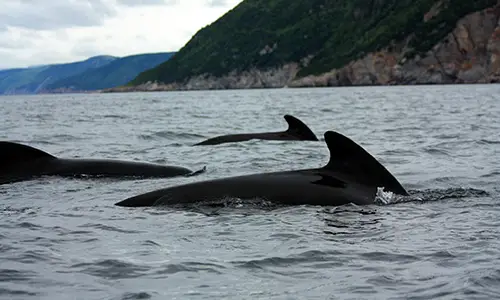1.The Largest Creature on Earth
The blue whale is the biggest creature that has ever lived on earth. Its tongue weighs as much as the weight of an elephant and its heart weighs as much as the weight of a car. Blue whales grow up to 30 meters or 100 feet long and attain a weight of up to 200 tons.
2.Feeding
As much as they are huge animals, blue whales feed on some of the tinniest marine shrimplike animals known as krill. An adult blue whale consumes about 3.6 tons of krill each day. These ocean living mammals capture their prey by diving and descending deep, about 500 meters.
3.The Blue Whale’s Feeding Machine
A blue whale’s mouth is endowed with a row of plates fitted with bristles that aid in filtering is food source, the Plankton in water. Blue whales have what appears to be a moustache of elongated bristles on the edge of each plate that helps in holding the tiny prey. Blue whales can hold about 5 tons of plankton and water in a single mouthful.
4.Breathing
Blue whales are deep water hunters but as mammals, they often have to swim to the surface of the water to breath. Once on the surface, blue whales exhale air through a blowhole that appears like a pressurized vapor cloud rising vertically over the water. This cloud can reach up to nine meters above the ocean water surface.
5.Movement
Blue whales tend to swim in small groups occasionally but mostly they swim in pairs or alone. Blue whales are often though to develop close attachments. Despite their huge sizes, blue whales move at a speed of more than 8 kilometers per hour and can attain a top speed of more than 30 kilometers per hour.
6.Communication
Though their voices cannot be heard, blue whales are said to be among the loudest animals on Earth. They communicate to each other through a series of low level groans, pulses and moans. In good conditions, these sea mammals are said to hear each other from distances of more than 1000 kilometers. Scientists say blue whales use vocalizations for both communicating and navigating the deep oceans.
7.Reproduction
Blue whale females only breed once after every 3 years. They have an 11 to 12 month gestation period and produce a since young one at a time. Blue whale calves can weigh up to 2.7 tons at birth and are about 8 meters long. New born calves are supported by the mother and nudged by other females to the surface to take the first breath. Calves suckle in water and take over 600 liters of milk per day. Over the first year, young whales gain about 90kg each day.
8.Blue Whale Predators
There are few known blue whale predators. However, they are often attacked by killer whales and sharks. Many more blue whales die or suffer injuries from crushing with huge ships each year as they swim to the ocean surface to breath.
9.Population
There are about 10 to 25 thousand blue whales swimming the world oceans. In the 1900s, aggressive whale hunting by people seeking whale oil almost drove blue whales to extinction. About 360,000 blue whales were killed between 1900 and 1960s. In 1966, blue whales were placed under protection by the International Whaling Commission.
10.Protection Status
Since the establishment of the International Whaling Commission, blue whales have only managed slight recovery. They are classified as an endangered species currently and appear on the World Conservation Union Red List.











Leave a Reply